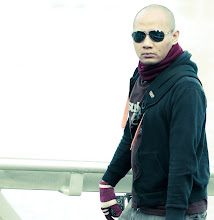Sunda Kelapa Harbor, Jakarta
From 13th to 16th century Sunda kelapa was the main port of Sunda Kingdom. The port served the capital, Pakuan Pajajaran, located about 60 km inland south, along Ciliwung river hinterland, now the site of modern Bogor. The port thrive on international spice trade especially pepper, the main spice produce of Sunda kingdom. Sunda Kelapa, together with Aceh and Makassar, were one of the few Indonesian ports that maintained ties with Europe.
In 1522, the Portuguese secured a politics and economic agreement with Sunda Kingdom, the authority of the port. In exchange for military assistance against the threat of rising Islamic Javan Sultanate of Demak, Prabu Surawisesa, king of Sunda at that time, granted them free access to the pepper trade. Portuguese who were in the service of the sovereign, made their homes in Sunda Kelapa.
However in 1527, Fatahillah, on behalf of Demak attacked Portuguese in Sunda Kelapa and succeeded in conquering the harbour on June 22, 1527, after which Sunda Kelapa was renamed Jayakarta.[2] Later the port become the part of Banten Sultanate.
In 1619, Jan Pieterszoon Coen, an official working for the Dutch East India Company, seized the port of Jayakarta from the Sultanate of Banten and razed the city. From the ashes of Jayakarta, the Dutch build a new city, Batavia. The old port served as the main port of Batavia until late 19th century, when Netherlands East Indies government decided to built a new Tanjung Priok port to accommodate the increasing traffic as the result from the opening of the Suez Canal.[3] The new port located 9 kilometers east from the old port. After the independence of Republic of Indonesia, the Batavia old port is renamed back to its original name, Sunda Kelapa, as a tribute to the long history of the port as the cradle of Jakarta. (source: Wikipedia)
Labels: People


































